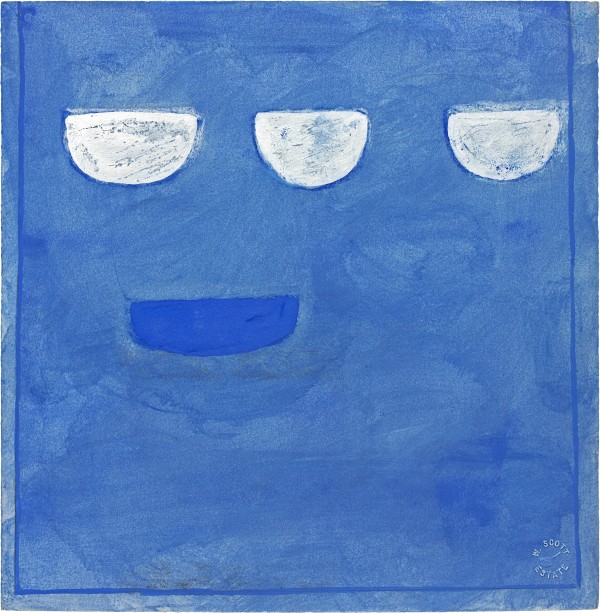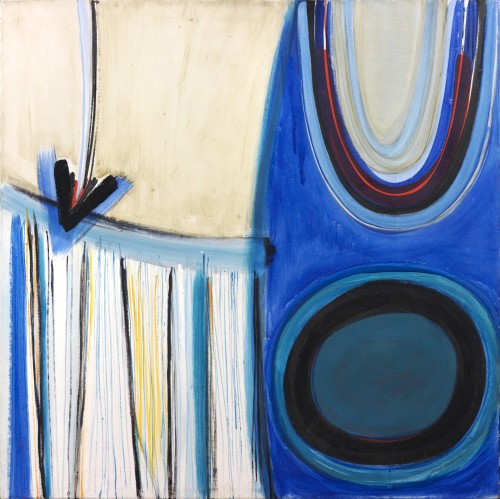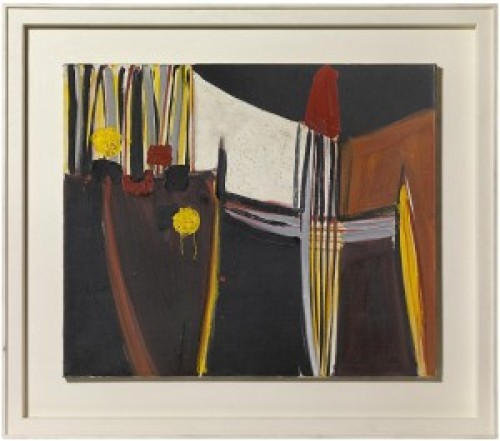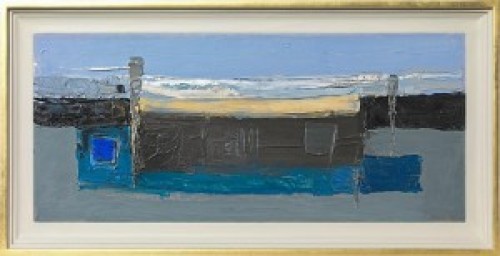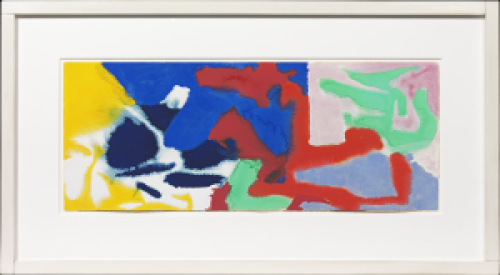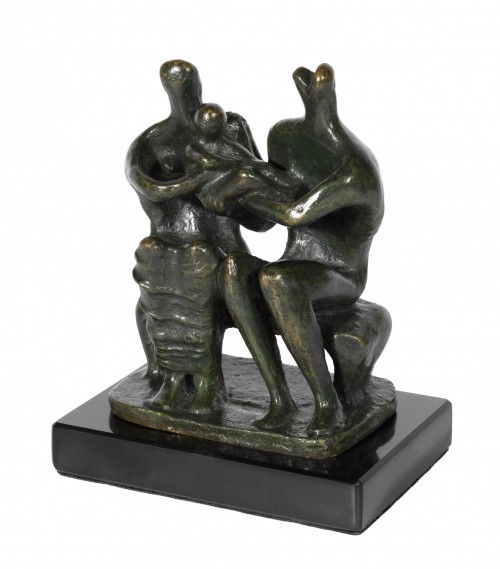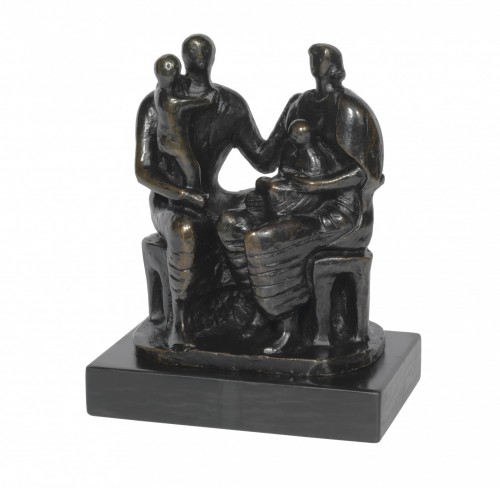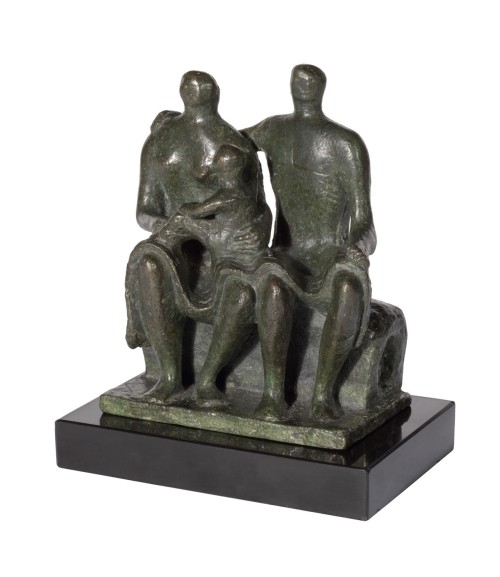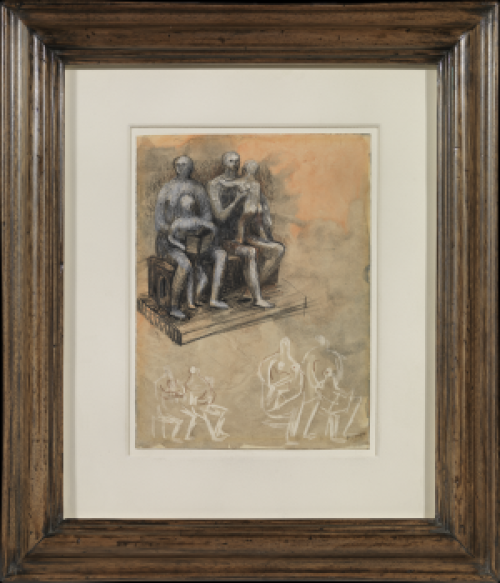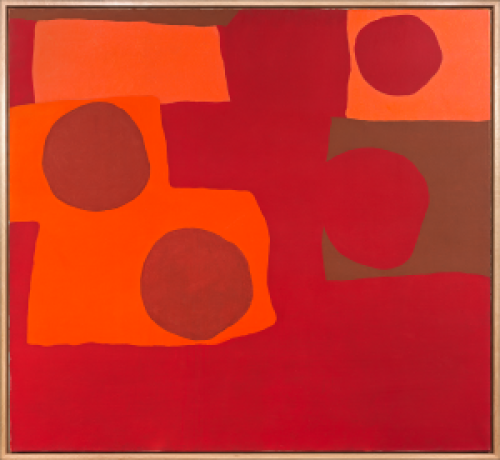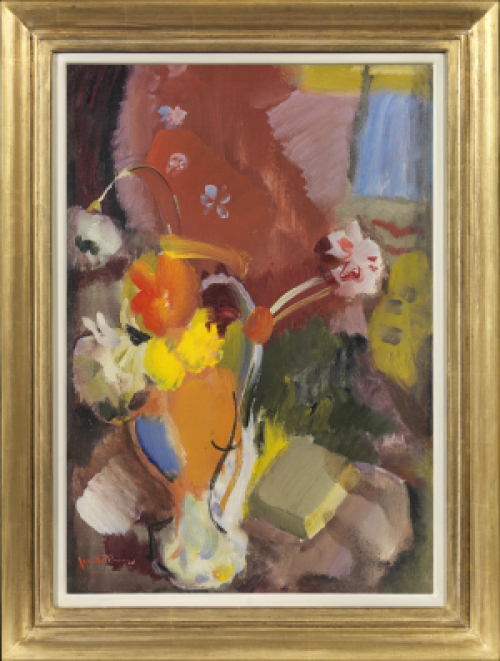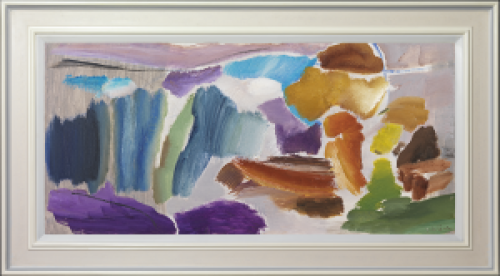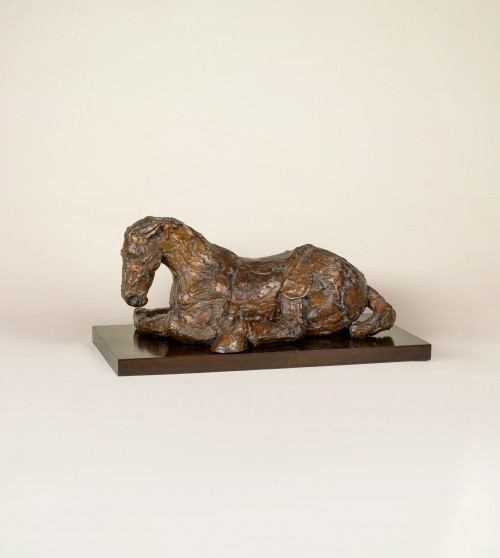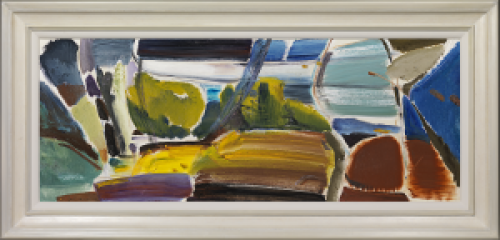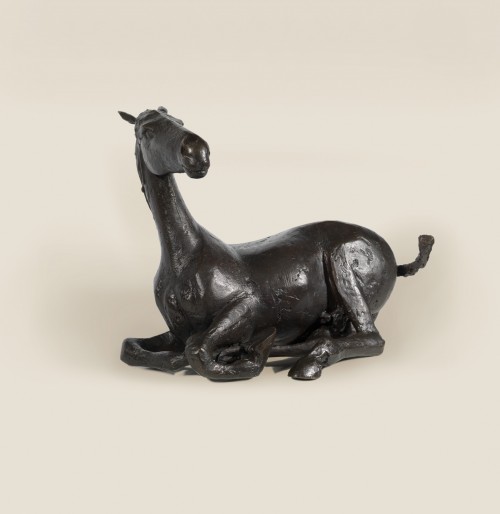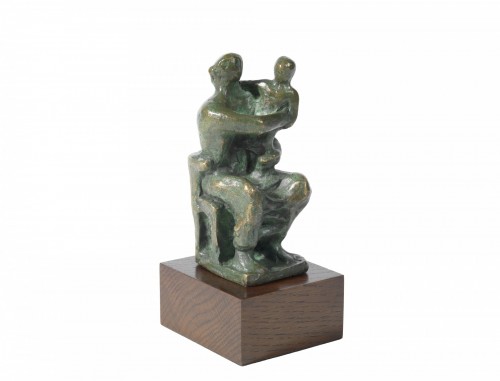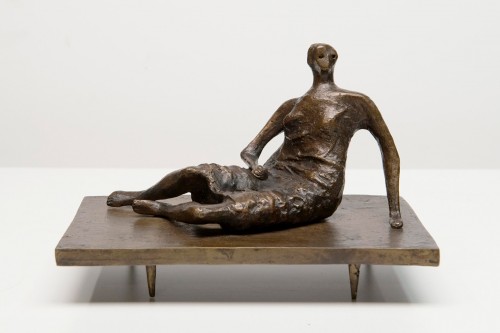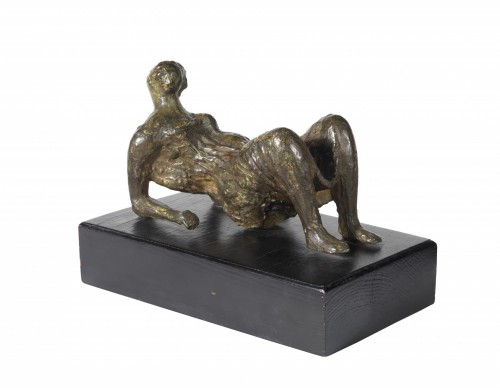WILLIAM SCOTT CBE RA
Greenock 1913 - 1989 Somerset
Ref: CD 181
Blue fish
Signed and dated on the reverse: W SCOTT 81
Oil on canvas: 29 x 36 in / 73.7 x 91.4 cm
Frame size: 30 ¾ x 37 ¾ in / 78.1 x 95.9 cm
Floated in a white waxed tray frame
Provenance:
Private collection, Edinburgh, seen at the Royal Academy exhibition and purchased directly from the artist
Exhibited:
London, Royal Academy of Arts, Summer Exhibition, 16th May-16th August 1981, no.652
Literature:
Sarah Whitfield (ed.), William Scott Catalogue Raisonné of Oil Paintings, 1969-1989, vol.4, Thames & Hudson in association with William Scott Foundation, London 2013, no.908, illus. in colour p.288
‘I find beauty in plainness, in a conception which is precise, a simple idea which to the observer must inevitably shock and leave a concrete image on the mind.’ William Scott, 1947
Though spoken early in his career, Scott’s statement equally illuminates his beautiful late still lifes, whose clarity of form and composition had reached their apotheosis. Norbert Lynton suggests Scott returned to painting fish following his trip to Japan in 1976: ‘not the starved mackerel Guy Burn had found among his earliest still lifes, but a lively, fresh and pushy creature…WS’s sons confirm that he liked catching fish as well as eating them, notably mackerel and sardines. On camping holidays in Cornwall and Brittany they recall him frying the fish, with the heads left on in the French manner.’[1] Scott exhibited the present work at the Royal Academy Summer Exhibition in 1981, before gifting a smaller, centralised Fish to the Royal Academy of Arts Trust the following year. Scott’s paintings of fish also complement the collections of the Scottish National Gallery of Modern Art, The Fitzwilliam Musuem, Cambridge and the Tate, amongst others.
Here Scott defines the fish in a deep sonorous blue, articulating its head, fins and outline in a darker shade than its translucent body, placed diagonally across an opaque white platter which sits on a ground or tabletop of cream. Two other richly coloured forms float below: a small terracotta pan, whose cropped handle directs our gaze from the left edge diagonally towards the fish and a small black bowl on the right.
[1] Norbert Lynton, William Scott, Thames & Hudson, London 2004, p.336.




